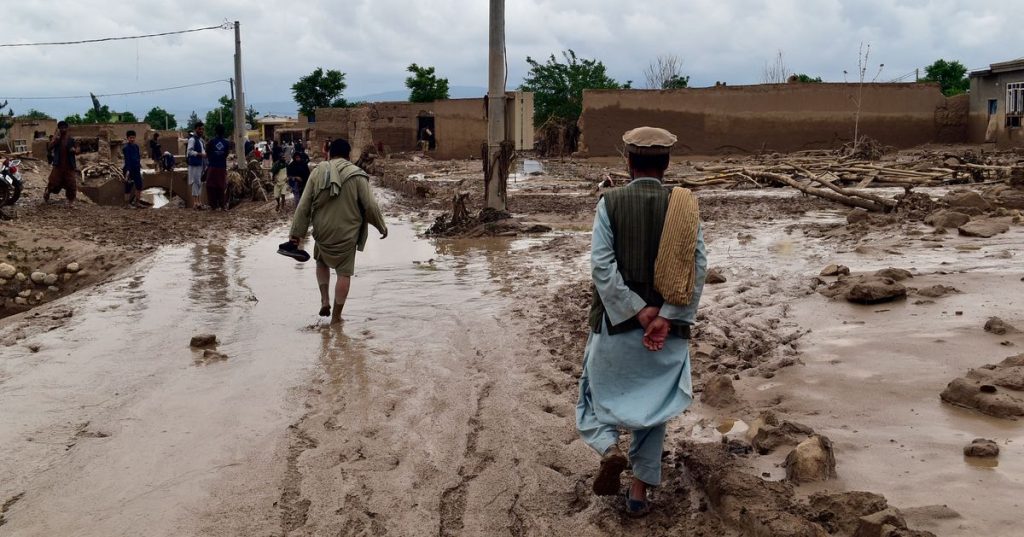Flash floods resulting from heavy seasonal rains in Afghanistan have led to the death of over 300 people and the destruction of more than 1,000 houses, according to the U.N. food agency. The World Food Program is providing fortified biscuits to survivors of the floods that have affected several provinces, particularly Baghlan and Takhar. The chief spokesman for the Taliban government, Zabihullah Mujahid, stated that hundreds have died and many have been injured in provinces like Badakhshan, Baghlan, Ghor, and Herat. The government has mobilized resources to rescue people, transport the injured, and recover the deceased.
The Taliban Defense Ministry announced that the country’s air force has started evacuating people in flooded areas and has rescued a large number of individuals. They have also transported 100 injured people to military hospitals in the region. The flooding has prompted calls for immediate aid and long-term planning by the Taliban and international actors to address the vulnerabilities that Afghanistan faces due to the climate crisis. U.N. special rapporteur Richard Bennett emphasized the need for both short-term relief efforts and future resilience planning.
Videos circulating on social media show families desperately searching for their loved ones behind a hospital in Baghlan and being advised to start digging graves while staff prepare bodies for burial ceremonies. This tragic situation highlights the devastating impact of the floods on communities in Afghanistan. In April, heavy rains and flash flooding caused the death of at least 70 people and resulted in damage to around 2,000 homes, three mosques, and four schools. The ongoing floods have further exacerbated the challenges faced by the Afghan population.
The floods have particularly affected the northern provinces of Baghlan and Takhar, where entire communities have been devastated by the deluges. The Taliban government has made efforts to respond to the crisis by utilizing available resources to rescue and assist those affected by the floods. The situation underscores the urgent need for coordinated action to address the climate crisis and its impact on vulnerable populations in Afghanistan. The international community is called upon to support relief efforts and help the country build long-term resilience against future natural disasters.
The devastating impact of the floods in Afghanistan serves as a reminder of the country’s vulnerability to extreme weather events and the urgent need for preventive measures and disaster preparedness. The flooding has claimed hundreds of lives and caused extensive damage to infrastructure, homes, and public buildings. The Taliban government’s response to the crisis, including mobilizing resources for rescue and relief efforts, highlights the need for effective coordination and support from both domestic and international actors to address the aftermath of the floods.
As communities in Afghanistan grapple with the aftermath of the floods, the focus shifts to providing emergency assistance to those affected, ensuring access to essential services, and supporting long-term recovery efforts. The floods have underscored the need for sustainable development strategies and climate adaptation measures to mitigate the impact of natural disasters on vulnerable populations. The international community must work alongside the Afghan government to provide humanitarian aid and support efforts to build resilience and enhance disaster preparedness in the face of future climate-related challenges.


